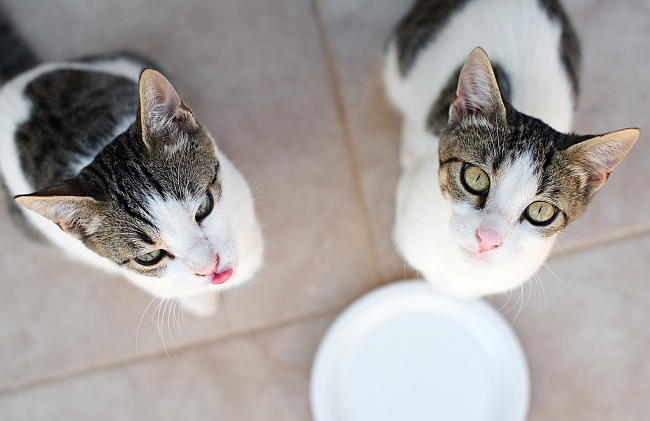
It is no secret that most cats live to the beat of their own drum. They generally do what they want to do, when they want to do it. This applies to everything from playing, napping, exploring, hiding, and even eating. Some unfortunate pet owners have struggled to get their fastidious felines to sup on a regular basis, or consume sufficient amounts of food. Whether it is stubbornness, skepticism or an illness that is causing your kitty to turn up his nose at the food bowl, here are some possible reasons why your cat is refusing to eat, and what you might be able to do about it.
Reasons Your Cat May Not Be Eating
Stress and Anxiety: If there has been a significant change in your home (loud noises from remodeling, a divorce/separation from a close family member, the addition of a new pet or baby) the cat might just have his nerves on high alert. Anxiety has a way of diminishing the appetite, so do what you can to help your cat relax (using calming collars, catnip, or stress-reducing clothes like the ThunderShirt) and he should soon get back to the normal routine.
Nausea: When your kitty approaches the bowl, if he is licking his lips often but disinclined to eat, he could be feeling nauseous. He may be sick from having ingested some foreign object that gave him a stomach ache or still be stuck in his mouth somewhere. Nausea is often symptomatic of another disease as well, so if your cat continues to avoid his food, take him to the vet to see if there is an underlying issue.
Pain or Illness: Internal pain, injury or trauma also can cause a feline to lose his appetite, particularly when the agony is acute. Alleviating pain medications might help stabilize the cat and curb his pain so that he would feel up to consuming food. If your cat seems sensitive to touch, is meowing often, and hisses or scratches when you approach him, it would be wise to take him to the vet to find out what is ailing him.
Location and Feeding Dish: Another factor to consider would be where and how your cat is being fed. Location can surprisingly create a troubling dynamic. If his food bowl is placed where there is a lot of foot traffic in the home, or if the food bowl is next to the dog bed, a cat may not feel he can eat in peace. Similarly, if it is too close to the litter box, the odors might make the food seem unappetizing. Loud, clanging food dishes, or bowls that are deep (causing your cat’s whiskers to bend) this might be unpleasant enough for the cat to decide eating often is not worth the discomfort.
Type of Food: When a cat won’t eat, try a different kind of food that might be more palatable to him. For example, the hard kibbles of dry food might hurt a cat’s mouth or scratch his sore gums, meaning a soft canned cat food or tuna could be better way to go. Make the change gradually however, as switching out the products abruptly actually can cause some skeptical cats to avoid eating right away.
Tips on Feeding A Picky Cat
Before you take your kitty to see the vet, try to see if a few subtle feeding changes might help him relax and eat regularly.
- Feed him in privacy. Take the food and water to a quiet room, such as the garage, a guest bathroom or the laundry room. Close the door for a while and see if the cat will start to eat when there is nothing to distract or dissuade him.
- Try warming up the food. This will release some of the deliciously appealing fragrances, and will not feel as chilly against the cat’s nose when he is eating. Highly aromatic food such as tuna, salmon, or chicken might lure your feline to the feast. If you do microwave the dish, make sure you mix a little water so that the heat doesn’t strip the serving of all moisture (as cats often suffer from dehydration). When it is ready, stir the food so that the heat is distributed evenly and won’t scald the cat’s tongue. Some pet owners have found heating a meal to be very effective.
- Serve the cat food on a flat-dish instead of in a bowl. If your cat does not like digging his head deep into a bowl to lick up the final scraps, try serving him on a dish that is flat and easily accessible without the corners rubbing and bending the whiskers.
- Buy age-appropriate food. Switch out dry foods for smooth canned foods that will nourish your kitty without hurting his teeth. If your older cat has a hard time reaching down to the dish, set it on a small box a few inches off the ground, so the cat does not have to stoop so severely.

